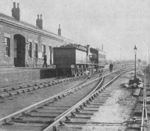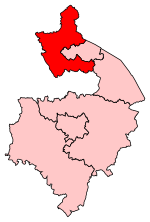Blythe End
Villages in WarwickshireWarwickshire geography stubs
Blythe End is a hamlet in the North Warwickshire district of Warwickshire, England. Blythe End is halfway between Coleshill (where the population details can be found) and Shustoke on the B4114 road (the former A47 Birmingham to Nuneaton road). There are a few houses, an old mill and a water works. The most famous building is Blyth Hall, built by Sir William Dugdale in the 17th century, but with 18th-century additions. It is still the family home. Sir William Dugdale was born at Shustoke. He recorded the nearby Blythe Bridge, which carries the road over the River Blythe, as dating from 1439.
Excerpt from the Wikipedia article Blythe End (License: CC BY-SA 3.0, Authors).Blythe End
Blythe Road, North Warwickshire
Geographical coordinates (GPS) Address Nearby Places Show on map
Geographical coordinates (GPS)
| Latitude | Longitude |
|---|---|
| N 52.512 ° | E -1.686 ° |
Address
Blythe Road
Blythe Road
B46 2AG North Warwickshire
England, United Kingdom
Open on Google Maps








